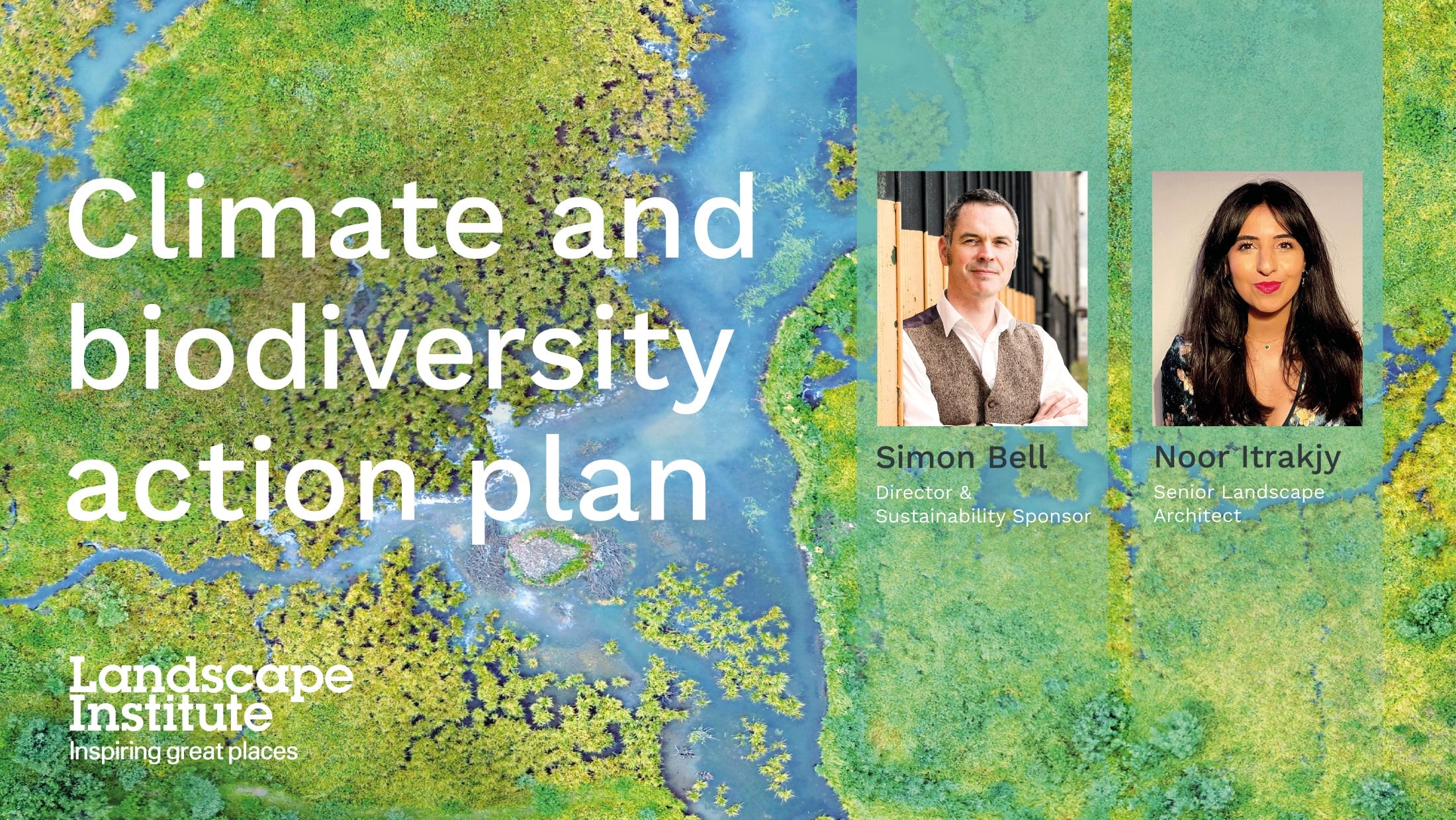
Simon Bell and Noor Itrakjy recently joined the Landscape Institute’s Embodied Carbon Advisory Group. They will share their experience and knowledge supporting the Landscape Institute’s policy and technical teams in their work on understanding and calculating embodied carbon in Landscape Architecture.
Assisting in developing guidance on tools and methodologies and support knowledge sharing and skills development with the goal of helping the Landscape Architecture profession to significantly reduce carbon emissions on projects
“Dramatically reducing carbon emissions on projects, calculating this from the outset and at every design stage is vital”.
In the current climate emergency we find ourselves in, with radical changes to working, living and social environments, there is an even bigger need to dramatically reduce carbon emissions on projects, calculating this from from the outset and at every design stage is vital.
Noor said “We’re passionate about helping steer and guide the Landscape Institute on best practice and applied experience. We’re fortunate here at HLM to work in an environment which encourages the exploration of multiple methods of reducing embodied carbon on our schemes. HLM Landscape collect and analyse environmental product declarations from our suppliers. We organise and attend CPD’s tailored to the reduction of embodied carbon, constantly reviewing and analysing the use of carbon calculation apps such as pathfinder and look at carbon sequestration benefits of our projects. The Circular Twin project is a research and development project which exemplifies how HLM Landscape are shooting for the stars on environmental and biodiversity gains. We will share our data and research with the advisory group to guide others”
By ensuring that the reduction of whole life carbon emissions is considered from the very beginning of projects, designers, with the correct knowledge, tools and data can make the best decisions to support truly sustainable outcomes. Landscape Architects have a key role to play across all areas of sustainability and embodied carbon reduction and indeed the opportunity for carbon sequestration on projects presents both a challenge and an opportunity.


